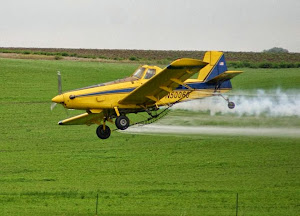The food and agricultural sector is one of the easiest sectors of any nation’s economy to disrupt and its disruption could have catastrophic consequences both nationally and regionally. Both developing and developed countries in Asia will be impacted by a disease outbreak or agroterrorism attack.
For countries with agriculture as a significant portion of their gross domestic product, disruptions anywhere along the food chain could lead to food insecurity and national instability in addition to the direct and indirect economic impacts. Yet in the context of CBRNe planning, preparations for a major biological emergency, whether naturally occurring or intentional, are often given less attention and allocated fewer resources than chemical or radiological events due to the reduced potential for a significant human death toll. However there are steps -some easily accomplished, others more difficult -that can be taken to mitigate the impact of disease outbreaks and agroterrorism activities.
HUMAN AND ANIMAL HEALTH
The ongoing outbreak of H5N1 -and commonly called bird flu – and more recently H7N9 serve as a strong reminder that people, animals and the environment and inextricably linked. Many of the diseases causing death and suffering across the globe are diseases that can be transmitted from animals to humans. The effective treatment, control and eradication of these diseases require an understanding of the interconnectedness of humans, animals and the environment. Approximately 15 million people die each year from infectious diseases. In children, infectious diseases are the main cause of death. Infectious diseases can also result in disability, diminished quality of life, and decreased productivity.
The cost of treatment and prevention of EIDs can be staggering and disproportionately impact developing countries. The impact of zoonotic epidemics from 1995 to 2008, many of them preventable, exceeded $120 billion globally (Marsh Inc. (2008) The Economic and Social Impact of Emerging Infectious Disease)
There are a number of factors linking human and animal health:
- Population Growth – Crowding results in more opportunities for existing disease organisms to mutate, recombine, and reassort into more deadly strains.
- Land Use – Contamination of water resources, deforestation and other land use changes result in more contact between humans, domestic animals, wildlife and vectors.
- Agricultural Practices – Open agriculture, deforestation, intensive agriculture and the use of antibiotics in food animals all impact the potential for disease emergence.
- International Trade and Commerce – An individual infected with an EID can be anywhere in the world within hours. Food is imported and exported around the world. Exotic pets are traded through legal and illegal markets.
FEASIBILITY OF AN AGROTERRORISM ATTACK
The history of bioterrorism confirms that naturally occurring disease agents such as plague, smallpox and anthrax are often used as weapons. Occurrences of reportable animal diseases published by the World Organization for Animal Health (OIE) over the last 12-months include numerous disease events in the region including anthrax, low pathogenic avian influenza (LPAI), highly pathogenic avian influenza (HPAI), classical swine fever, foot and mouth disease (FMD), and Newcastle disease. The presence of
these diseases in the region increases the risk of an intentional introduction to an uninfected country or the unintentional introduction through a breach in biosecurity.
Additionally, exploitable vulnerabilities exist throughout the entire food production system which can be difficult to manage. The vast nature of the food production system provides many opportunities for the introduction of disease agents. Other factors which make agriculture an attractive target include:
- Many highly contagious disease agents are endemic throughout the region
- Severe economic consequences of an attack
- Plant and animal pathogens are easier to acquire than human agents
- Little or no physical security at production facilities
- Farms are widely dispersed
- Disseminating plant or livestock pathogens presents less risk for the perpetrator
- The low cost and simplicity of delivery
- Incubations periods provide the opportunity for the disease to spread undetected and for the perpetrator to escape
REDUCING THE RISK
Just as vulnerabilities exist throughout the entire food supply chain, preparedness/mitigation measures are available to manage risk at each step. Many lessons have been learned from recent disease events such as FMD in South Korea and the United Kingdom and avian influenza around the globe. Through planning and implementation of effective mitigation strategies we can elevate our preparedness and effectively reduce the attractiveness of the use of these agents. More
